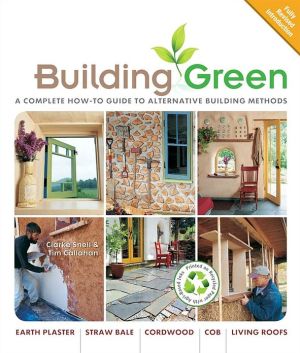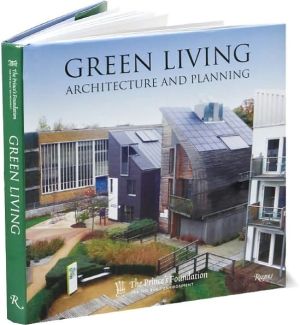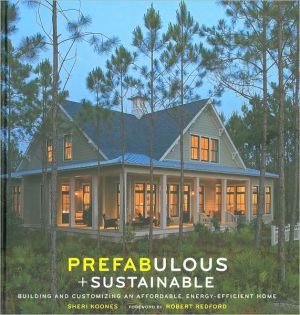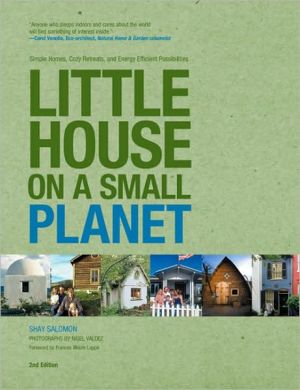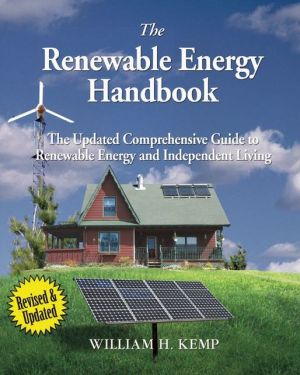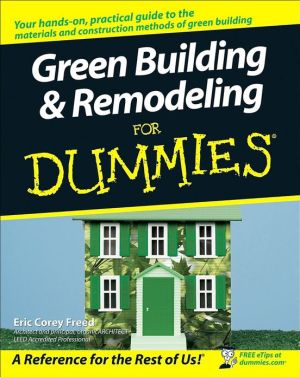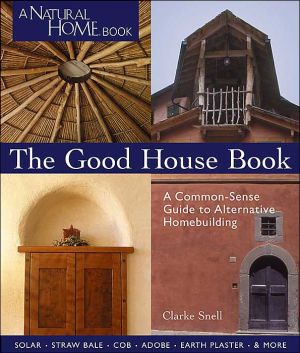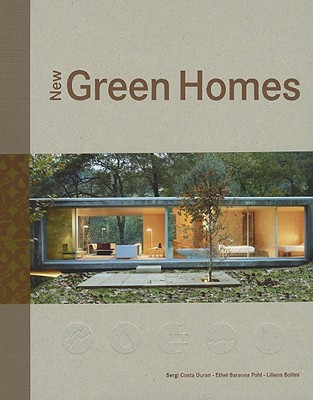Building Green, New Edition: A Complete How-To Guide to Alternative Building Methods Earth Plaster * Straw Bale * Cordwood * Cob * Living Roofs
The best-selling and highly regarded reference to sustainable construction gets an update! It’s refreshed with a completely revised introduction, a bright new cover, and extensive online resource tie-ins. Plus, it’s now printed on recycled paper with agri-based inks, so it’s greener than ever!\ This groundbreaking book doesn’t just tell you about “green” house-building techniques: it actually shows you, with more than 1,200 step-by-step photographs that follow the actual erection of an...
Search in google:
The best-selling and highly regarded reference to sustainable construction gets an update! It’s refreshed with a completely revised introduction, a bright new cover, and extensive online resource tie-ins. Plus, it’s now printed on recycled paper with agri-based inks, so it’s greener than ever!This groundbreaking book doesn’t just tell you about “green” house-building techniques: it actually shows you, with more than 1,200 step-by-step photographs that follow the actual erection of an alternative building from site selection to final-touch interior details. Readers will get a clear sense of the real world challenges as Snell and Callahan create a lovely country cottage using four methods: straw bale, cob, cordwood, and modified stick-frame.Along with sidebars throughout, there’s a thorough discussion of the fundamentals of building construction, alternative approaches, and designing a beautiful yet environmentally responsible home. Building Green was the first book of its kind—and it remains heads and shoulders above other titles in this field. Publishers Weekly This large, generously illustrated manual is an excellent primer on owner-designed and site-inspired building. Snell, who wrote the eco-friendly The Good House Book, and Callahan, a more conventional but highly experienced builder and contractor, take readers step-by-step through the creation of a charming little guesthouse, demonstrating a variety of "green" techniques along the way. They start with an introduction to building fundamentals and how alternative materials can provide the necessities of housing: structure, climate-control and separation from as well as connection to the outer world. Next comes a mini-course in design. But the bulk of the book is hands-on: the nuts-and-bolts of siting; foundations; flooring; living (plant-covered) roofs; and cob, cordwood, straw-bale and modified stick frame walls-although the book's minimal treatment of electricity and plumbing, and how to integrate them with unfamiliar materials like cob or straw-bale, disappoints. Snell's tendency to decry the sins of modern architectural practice can become exasperating, but doesn't diminish the value of his extensive experience-derived knowledge; and the grace and beauty of the authors' building project, featuring Callahan's fine finish work, is inspiring. The abundance of color photos detailing the construction process, supplemented by examples from indigenous buildings around the world, is particularly helpful. (Jan.) Copyright 2005 Reed Business Information.
\ From the PublisherPraise for Building Green:\ "Building Green chronicles the project from start to finish, combining the gorgeous photography of an architecture coffee-table book with the detailed instructions of a building manual." ReadyMade\ "This large, generously illustrated manual is an excellent primer on owner-designed and site-inspired building." Publishers Weekly\ "The most comprehensive and reader-friendly green building book...It's great for both the green building novice and expert." Builders Booksource\ "This book is a must read for architects, builders, and all people who want to create a healthy home." Helmut Ziehe, Founder, International Institute for Bau-Biologie & Ecology, Inc.\ "Well-written and understandable with wonderful illustrations." Pliny Fisk & Gail Vittori, Co-Directors, The Center for Maximum Potential Building Systems\ \ \ \ \ \ Publishers WeeklyThis large, generously illustrated manual is an excellent primer on owner-designed and site-inspired building. Snell, who wrote the eco-friendly The Good House Book, and Callahan, a more conventional but highly experienced builder and contractor, take readers step-by-step through the creation of a charming little guesthouse, demonstrating a variety of "green" techniques along the way. They start with an introduction to building fundamentals and how alternative materials can provide the necessities of housing: structure, climate-control and separation from as well as connection to the outer world. Next comes a mini-course in design. But the bulk of the book is hands-on: the nuts-and-bolts of siting; foundations; flooring; living (plant-covered) roofs; and cob, cordwood, straw-bale and modified stick frame walls-although the book's minimal treatment of electricity and plumbing, and how to integrate them with unfamiliar materials like cob or straw-bale, disappoints. Snell's tendency to decry the sins of modern architectural practice can become exasperating, but doesn't diminish the value of his extensive experience-derived knowledge; and the grace and beauty of the authors' building project, featuring Callahan's fine finish work, is inspiring. The abundance of color photos detailing the construction process, supplemented by examples from indigenous buildings around the world, is particularly helpful. (Jan.) Copyright 2005 Reed Business Information.\ \ \ Library JournalIt's not easy being green, but its advantages in home construction are extolled at length in this substantial book. Green building relies on alternative methods and materials (e.g., earth plaster, strawbale, cordwood, cob), with an eye toward ecofriendliness and sustainability. Snell (The Good House Book: A Common-Sense Guide to Alternative Homebuilding) and Callahan, an experienced builder and craftsman, use a sample project of a small cottage to illustrate these methods and materials. Though the book is meant to be a manual on alternative building techniques, its bulk is devoted to green philosophy, with occasional asides on more practical construction considerations and mistakes to avoid. Only for larger collections or where there is demand. Copyright 2006 Reed Business Information.\ \
